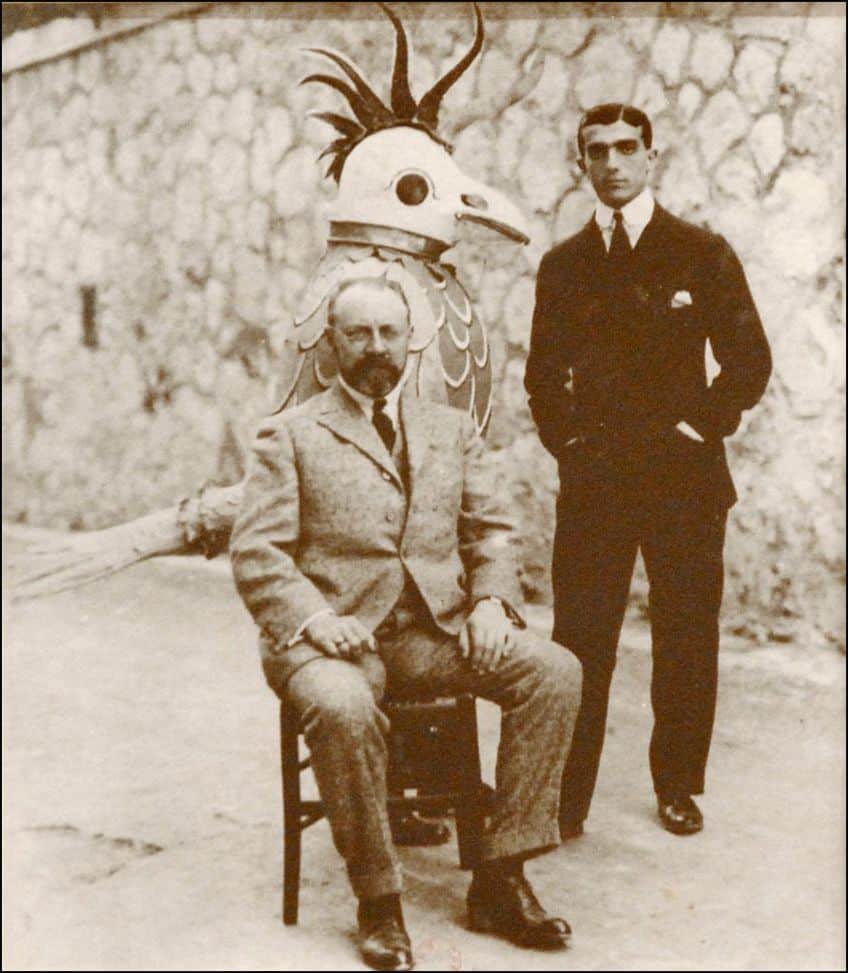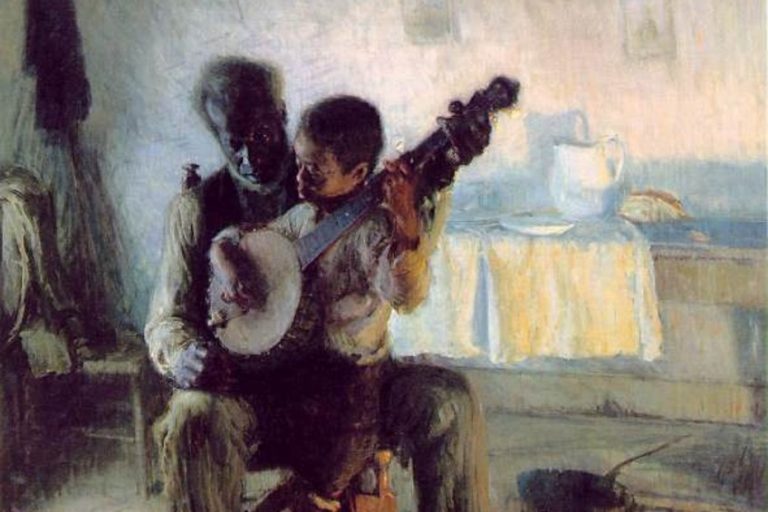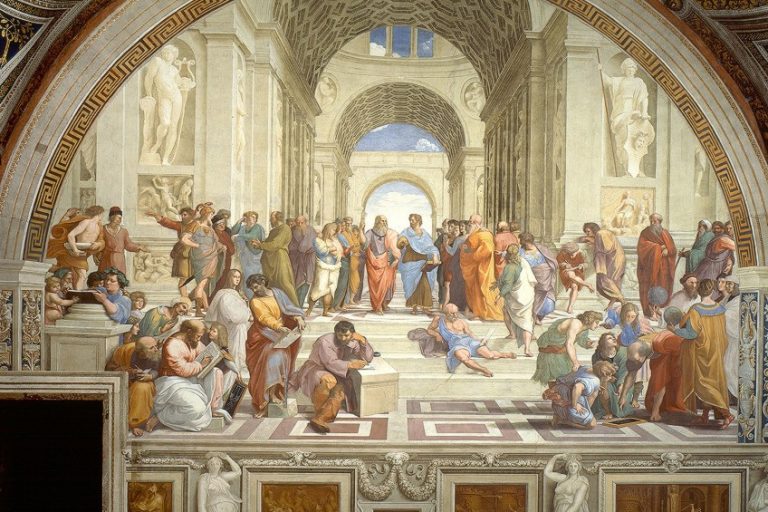“Goldfish” by Henri Matisse – An In-Depth Painting Analysis
Henri Matisse was known for his figurative art forms, especially his nude figures. Still, he also dove into other areas of representation, and ones that provided an air of peace, so to say. If you are a lover of fish, specifically goldfish, then you will enjoy this article. Spot the gold as you follow the current of one of Henri Matisse’s most utilized motifs, the goldfish.
Artist Abstract: Who Was Henri Matisse?
Henri Émile Benoît Matisse was a French artist born in Le Cateau-Cambrésis on December 31, 1869, and died on November 3, 1954, in Nice, France. His father was Émile Hippolyte Matisse and his mother was Anna Gérard. He studied law during his early years, but found his way to art, studying at the Académie Julian and the École des Beaux-Arts. He traveled throughout the world, including trips to Tangier in Morocco, North Africa, Italy, and Spain, among others. He was married to Amélie Parayre from 1898 to 1939, with whom he had his sons Jean and Pierre. He also had a daughter, Marguerite, the eldest, who was from another mother. Several of Matisse’s famous artworks include Woman with a Hat (1905), Le Bonheur de Vivre (1905 – 1906), and The Dessert: Harmony in Red (1908).

Goldfish (1912) by Henri Matisse in Context
| Artist | Henri Émile Benoît Matisse |
| Date Painted | 1912 |
| Medium | Oil on canvas |
| Genre | Genre painting |
| Period/Movement | Fauvism |
| Dimensions (cm) | 140 x 98 centimeters |
| Series/Versions | Part of a series of Goldfish paintings created between spring and early summer in 1912. |
| Where Is It Housed? | The Pushkin State Museum of Fine Arts, Moscow, Russia. |
| What It Is Worth | Purchased by Sergei Shchukin in 1912, before being acquired in 1918 by the State Museum of New Western Art, and then in 1948 by the Pushkin State Museum of Fine Arts. The exact price is uncertain. |
In the Goldfish painting analysis below, you will read more about where and when Matisse chose the goldfish as a subject and what the deeper meaning of it is. Although there are around 10 paintings featuring these glimmering goldfish, a formal analysis below will specifically discuss the Goldfish painting from 1912, housed at the Pushkin State Museum of Fine Art in Moscow.
Contextual Analysis: A Brief Socio-Historical Overview
Henri Matisse traveled to Tangier in Morocco during January and April 1912. This is where his fascination with goldfish sparked. He reportedly watched how the local people would stare at goldfish and move into what has been described as “meditative” or “contemplative” states.
Their being was relaxed and there was a quality of restfulness in the way they just watched the goldfish in bowls. This inspired Matisse to convey these qualities in his paintings and utilize the goldfish theme or motif in a variety of settings.
Examples include Arab Coffeehouse (1912 – 1913), housed at The State Hermitage Museum in Russia, which depicts two men sitting in the foreground staring at a bowl with goldfish in it. Zorah on the Terrace (1912 – 1913), at the Pushkin Museum of Fine Arts in Russia, includes a woman as the central figure, kneeling and with a goldfish bowl in the lower left corner.
Matisse also included the goldfish in other types of settings without figures present. Still lives of interior settings, and notably his own studio, became abodes for the artist to depict his gold motifs, so to say.
Studio with Goldfish (L’Atelier aux Poissons Rouges) (1912), which is housed at The Barnes Foundation in Pennsylvania, includes Matisse’s own studio space, and he shared other aspects of his artistry by including a sculpture and paintings. On a table in the center of the composition, just behind his reclining nude sculpture, is the cylindrical shape of the fish tank with what appears to be four goldfish in it.
Another sculpture is evident in Goldfish and Sculpture (1912), which depicts a blue interior and a reclining nude sculpture, and the characteristic cylindrical fish tank with three goldfish in it. Fish Tank in the Room (1912) at the National Gallery of Denmark depicts a cylindrical fish tank with three fish and a similar reclining nude sculpture.
The Interior with a Goldfish Bowl (1914), at the Centre Pompidou in Paris, depicts a blue room and a window overlooking an exterior urban space. On a table by the window is a cylindrical fish tank with two goldfish swimming in it.
Goldfish and Palette (1914 – 1915), at the Museum of Modern Art in New York, depicts goldfish in their tank, however, this iteration has been described as having Cubist qualities due to the somewhat dissected pictorial space. The goldfish appear red in their cylindrical tank.
Two later versions of Matisse’s goldfish motif include Woman Before an Aquarium (1921 – 1923), which is housed at the Art Institute of Chicago, and Young Woman Before an Aquarium (1921 – 1922). Both paintings depict a woman staring at a glass bowl with four goldfish in it while resting her chin on her elbows, which are folded on a tabletop.
The Goldfish Bowl (1921 – 1922) still life at the Metropolitan Museum of Art in New York depicts a white table with a rounded glass bowl and what appears to be five goldfish swimming in it.
This was reportedly painted in Matisse’s apartment in Nice, evident by the wallpaper as the background.
Formal Analysis: A Brief Compositional Overview
The formal analysis of Henri Matisse’s Goldfish painting will discuss the subject matter in more detail. This will include how it is stylistically composed according to the elements of art and how the principles of art occur within the composition and arrange the art elements to create a coherent composition.
Subject Matter: Visual Description
Goldfish by Henri Matisse depicts the central image, which consists of four goldfish in a cylindrical-shaped glass fish tank placed on a small round garden table, which has a light pinkish top. The scene appears to be in an indoor setting, which was in fact at Matisse’s home when he lived in Issy-les-Moulineaux, which is located close to Paris. Reportedly, all the objects in the scene belonged to Matisse. Surrounding the central fish tank are numerous plants and pink flowers, and what appears to be part of a light green garden bench in the lower to middle left corner of the composition.
The floor appears darker, almost a black, dark-gray color, and what seems to be the wall in the background appears light pink.
Color
Color was a significant aspect of Matisse’s artworks, and it shows in this Goldfish painting. The colors in Goldfish by Henri Matisse consist largely of greens and pinks, which appear on the foliage and the flowers around the fish tank, including the garden bench and table. There are mustard yellows, evident by the two pot plants on the table, and the fish is a luminous orange-red, standing out amidst the pinks and greens.
Texture
The texture from Matisse’s paintbrush is evident in the Goldfish painting, which appears loosely applied and in various directions. This creates an expressiveness and dynamic quality for the composition. Furthermore, the brushstrokes also imply texture.
For example, notice the brushstrokes conveying the variegations on the leaves or the translucent quality of the water in the fish tank, which creates reflections of the goldfish on the surface.
Line
There is a combination of lines in Goldfish by Henri Matisse, which creates variety, examples include rounded convex and concave lines from the table and fish tank, and the foliage. There are also diagonal, straight, and curved lines created by the plant stems and the bench to the left.
Various black outlines are evident, for example, delineating the contours of the glass fish tank, the vase to the right on the table, and some of the plant stems. Other outlines appear to be implied by the colors that create the forms and shapes of the subject matter. Repetition is created by the straighter and looped lines running along the garden chair to the left, which also creates a patterned effect.
Shape and Form
There are a variety of shapes and forms in the Goldfish painting, and a contrast between the organic, or naturalistic, forms of the foliage and fish, and the more geometric shape created by the garden furniture. Examples of the types of shapes and forms include the cylindrical form of the fish tank, which creates a sense of three dimensions by the way Matisse depicted it, or the more two-dimensional circular shape of the table.
A patterned effect is created by repeating the circular shapes of the foliage along the upper left portion of the composition.
Space
Henri Matisse depicted multiple viewpoints in the Goldfish painting, for example, an aerial view and a frontal view. This is most noticed in the cylindrical fish tank, which depicts the fish from a top view and a front view, as if we, the viewers, are standing from a high vantage point looking down on the scene, yet there is an eye-level view too. The table is similarly viewed, as if from above, and it appears slanted because of this vantage point, however, its legs appear to be placed straight underneath, which further distorts the spatial understanding.
Matisse, Peace, and Quiet
The Henri Matisse Goldfish painting analysis above explored the series of paintings in which goldfish became a recurring theme, placed in unique stylized settings, often removed from realistic representation, but firmly attached through Matisse’s emotive utilization of color and form.

This article also discussed what inspired Matisse to place these golden tokens in his paintings, which were more than mere decorative elements. The artist has been widely quoted as stating that art should be something that conveys peace and calmness, and it should be “devoid of troubling or depressing subject matter”. Ultimately, his goldfish became symbols of peace and quiet, and reportedly of paradisiacal ideals.
Frequently Asked Questions
Who Painted the Goldfish?
The Fauvism artist Henri Matisse painted an oil on canvas titled Goldfish (1912). It is housed at the Pushkin State Museum of Fine Arts in Moscow, Russia. It measures 140 by 98 centimeters.
How Many Goldfish Paintings Are There?
Henri Matisse created a series of paintings that depicted goldfish in them, which was during spring and early summer in 1912. He reportedly created around 10 paintings and several prints and drawings.
What Inspired Henri Matisse’s Goldfish Paintings?
When Henri Matisse visited Tangiers in Morocco in 1912 during January and April, he experienced how the locals would watch goldfish in bowls. This was a calming and so-called contemplative activity that the artist conveyed through several of his paintings.
What Was Henri Matisse’s Art Style?
Henri Matisse was one of the leading Fauvism artists, which was an art movement that started around 1899 and lasted for several years, until around 1908. It was started in France by several artists who were named the so-called Fauves, which means wild beasts in French.
Alicia du Plessis is a multidisciplinary writer. She completed her Bachelor of Arts degree, majoring in Art History and Classical Civilization, as well as two Honors, namely, in Art History and Education and Development, at the University of KwaZulu-Natal, South Africa. For her main Honors project in Art History, she explored perceptions of the San Bushmen’s identity and the concept of the “Other”. She has also looked at the use of photography in art and how it has been used to portray people’s lives.
Alicia’s other areas of interest in Art History include the process of writing about Art History and how to analyze paintings. Some of her favorite art movements include Impressionism and German Expressionism. She is yet to complete her Masters in Art History (she would like to do this abroad in Europe) having given it some time to first develop more professional experience with the interest to one day lecture it too.
Alicia has been working for artincontext.com since 2021 as an author and art history expert. She has specialized in painting analysis and is covering most of our painting analysis.
Learn more about Alicia du Plessis and the Art in Context Team.
Cite this Article
Alicia, du Plessis, ““Goldfish” by Henri Matisse – An In-Depth Painting Analysis.” Art in Context. August 25, 2023. URL: https://artincontext.org/goldfish-by-henri-matisse/
du Plessis, A. (2023, 25 August). “Goldfish” by Henri Matisse – An In-Depth Painting Analysis. Art in Context. https://artincontext.org/goldfish-by-henri-matisse/
du Plessis, Alicia. ““Goldfish” by Henri Matisse – An In-Depth Painting Analysis.” Art in Context, August 25, 2023. https://artincontext.org/goldfish-by-henri-matisse/.











